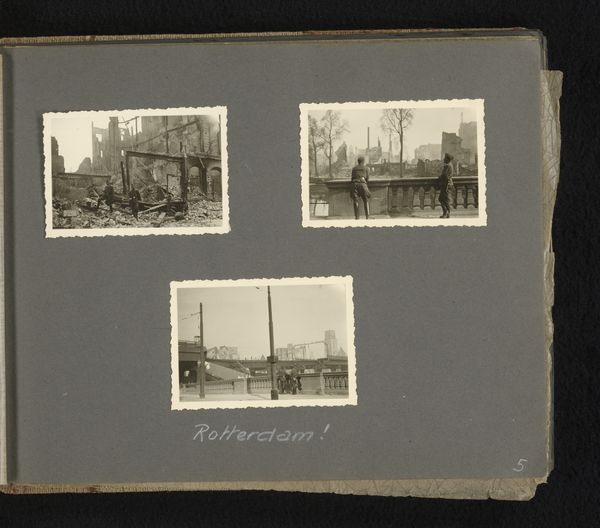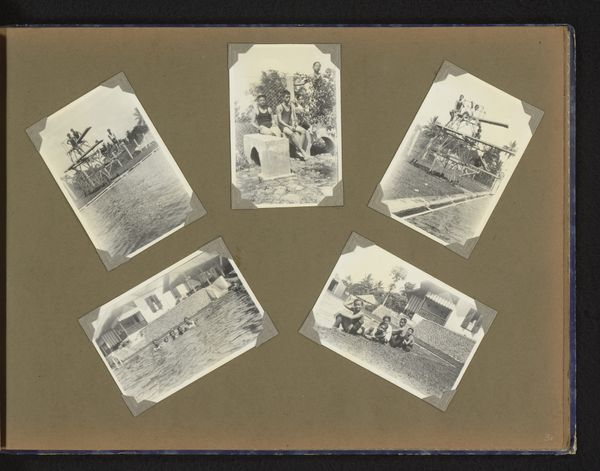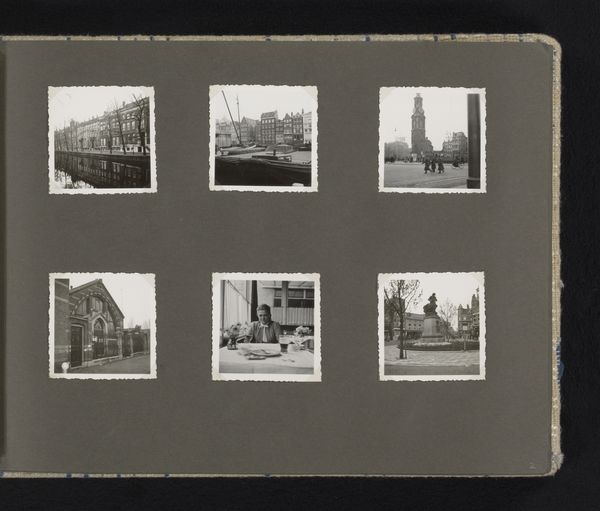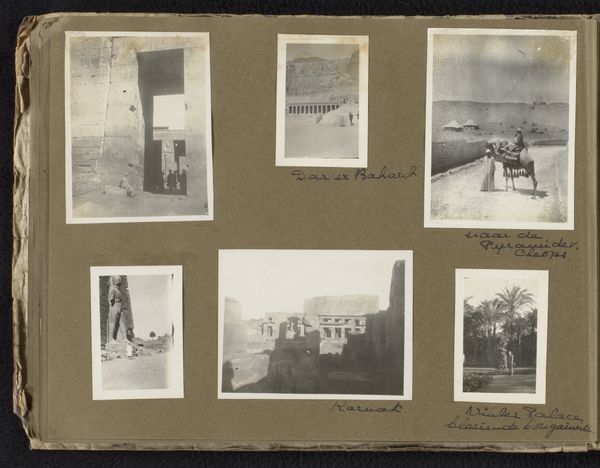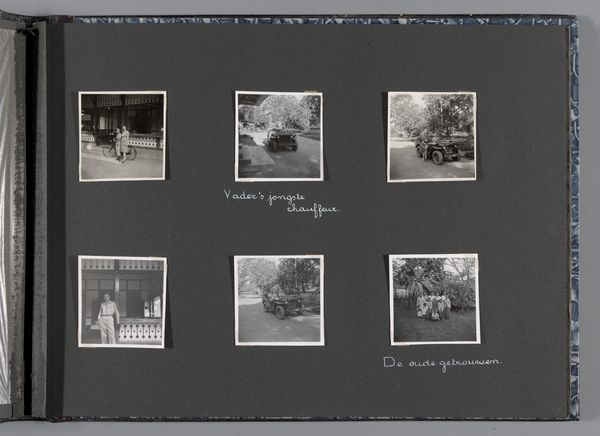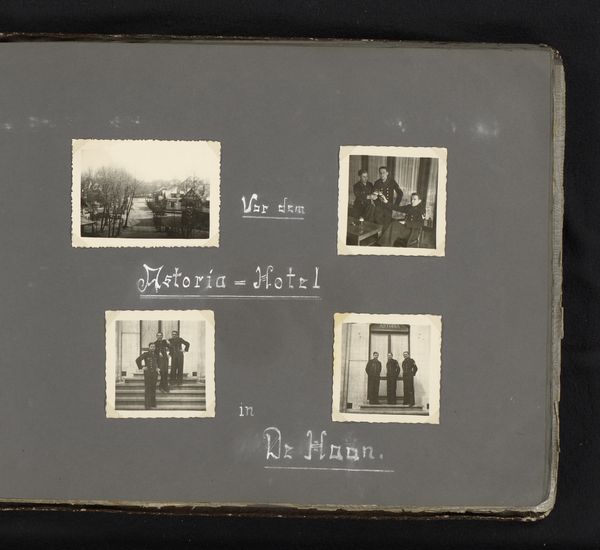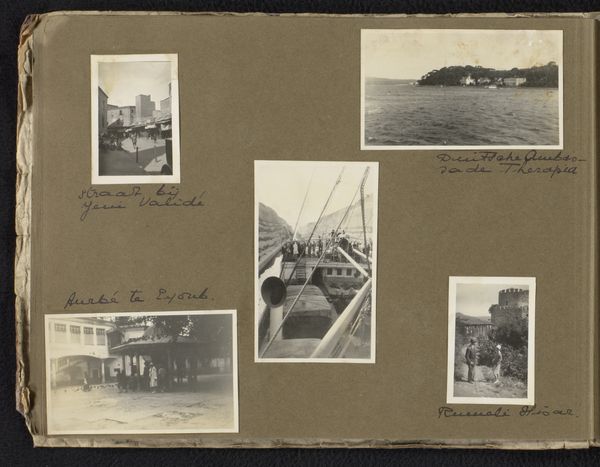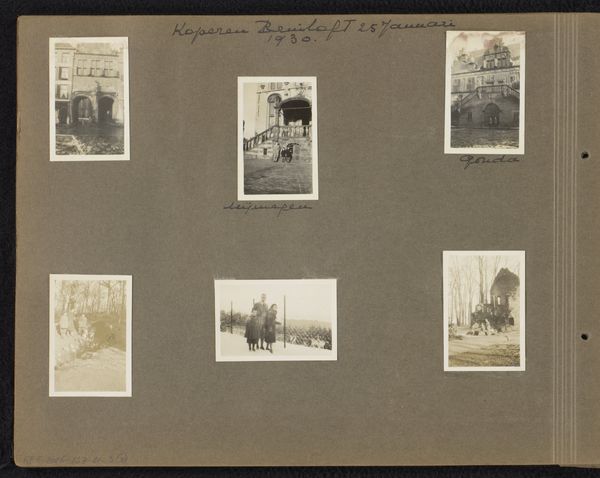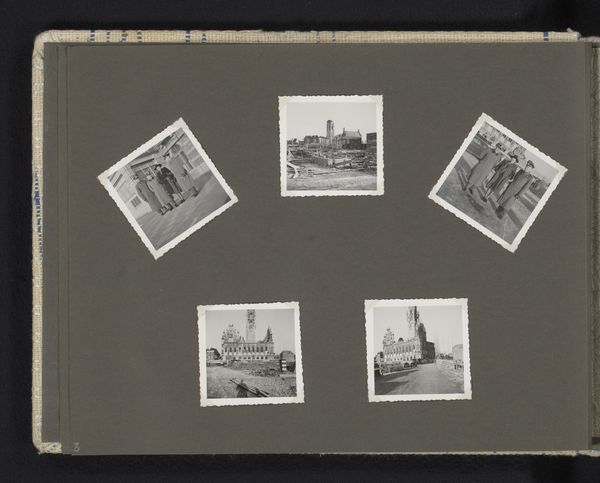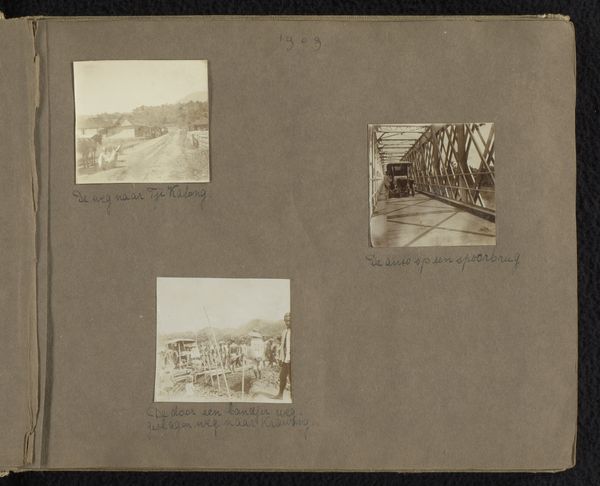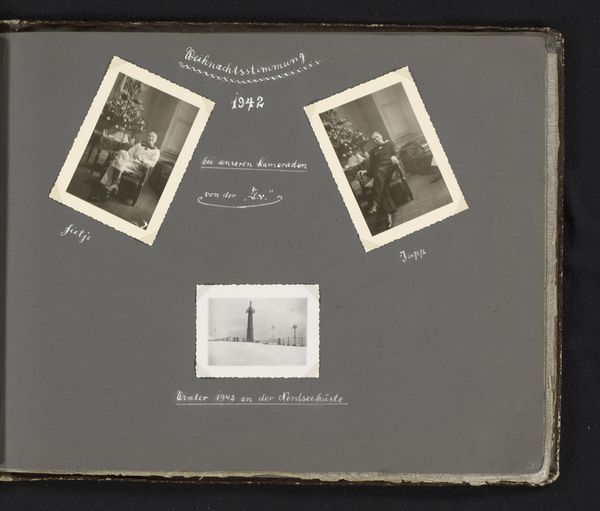
photography
#
landscape
#
street-photography
#
photography
#
cityscape
Dimensions: height 65 mm, width 85 mm, height 272 mm, width 340 mm
Copyright: Rijks Museum: Open Domain
Editor: So, this is "Kriegsmarine in Wimereux," a set of photographs, potentially from 1942-1943. They are presented as if within the leaves of an album, featuring cityscapes, landscapes, and street scenes in shades of grey. What strikes me is the almost clinical way the photos are laid out. What do you see when you look at these images? Curator: Primarily, I am struck by the composition. Each photograph, while seemingly documenting the world, operates as a discrete unit, carefully framed within the larger context of the album page. The grey background acts as a neutral ground, pushing the photographs forward and emphasizing their materiality. Observe the varied textures within the frame – from the architectural lines of the buildings to the soft focus of the landscapes. Note that all of these elements construct meaning beyond the mere depiction of a scene. What compositional elements do you think are most striking? Editor: The ordering of the photos is odd, without any visual cues tying them together, and the presence of typed annotations on the grey background. I also can't help but think about what a Kriegsmarine soldier might be wanting to capture in their photographic record. Curator: Indeed, one might be compelled to search beyond pure formal qualities. But it's critical to notice how meaning is being constructed through light, form and structure here. Each photo could be appreciated without its neighboring picture because the individual compositions hold interest for the viewer. Let's think of this as less of a narrative collection, and more as an exercise in exploring perspective and light. Does that framing make the aesthetic intent clearer to you? Editor: I see that point. Thinking about each frame as its own artistic statement, instead of parts of a larger historical narrative, definitely highlights composition. Thanks for highlighting that for me! Curator: A formalist approach illuminates elements often overshadowed by historical context, offering a new appreciation for the photographer's eye.
Comments
No comments
Be the first to comment and join the conversation on the ultimate creative platform.
